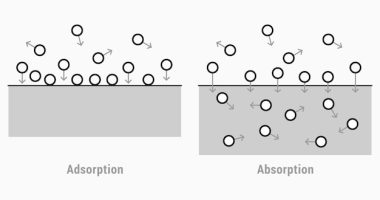The innovative study titled “Nootkatone mitigates periodontal inflammation and reduces alveolar bone loss via Nrf2/HO-1 and NF-κB pathways in a rat model of periodontitis” explores the potential of nootkatone treatment for periodontitis, a prevalent and painful gum disease that results in significant oral health degradation. Led by researchers Ye Yin, Zeyu Ma, and Peiliang Shi, this investigation addresses the critical need for effective treatments against the chronic inflammation and alveolar bone loss characteristic of periodontitis. Utilizing a rat model, the study meticulously evaluates the effectiveness of nootkatone, a natural compound known for its anti-inflammatory properties, in moderating periodontal disease markers and mechanisms. By dividing twenty male Sprague-Dawley rats into control, periodontitis, and nootkatone-treated groups, the research provides a comprehensive analysis of nootkatone’s impact on bone density, inflammatory cytokine levels, and periodontal tissue composition through a series of sophisticated histological and biochemical techniques. The findings illuminate the dual beneficial effects of nootkatone via the modulation of Nrf2/HO-1 and NF-κB pathways, offering promising insights into its utility as a novel therapeutic agent for managing periodontitis.
Periodontitis is a serious and prevalent oral health issue that affects a large portion of the global population, leading to the deterioration of gum tissue and the destruction of the alveolar bone which anchors teeth. Traditional treatments for periodontitis often involve mechanical cleaning, the use of antibiotics, and in severe cases, surgical interventions. While these methods can be effective, they often come with drawbacks such as antibiotic resistance and the recurrence of the disease. Consequently, there is an ongoing search within the dental and medical research communities for more effective and sustainable therapies, particularly those harnessing natural compounds with fewer side effects. This is where the potential of a nootkatone treatment for periodontitis comes into play, promising a novel approach.
Nootkatone, a sesquiterpene initially isolated from the grapefruit, has been recognized for its distinct citrusy aroma and is commonly used in flavoring and fragrance industries. Beyond its commercial use, scientific studies have demonstrated that nootkatone possesses robust anti-inflammatory, antimicrobial, and antioxidant properties, making it a candidate for medicinal applications, including its use in oral health. The compound’s mechanism of action is particularly interesting because it involves the activation of the Nrf2/HO-1 pathway, which plays a crucial role in cellular defense mechanisms against oxidative stress, and the inhibition of the NF-κB pathway, which is a critical regulator of the inflammatory response.
Exploring nootkatone treatment for periodontitis, this study is anchored on the hypothesis that nootkatone can both mitigate inflammation and protect against bone loss in periodontitis. This dual action is crucial because while many treatments may effectively reduce gum inflammation, few provide significant protection or enhancement to bone tissue regeneration. The degradation of the alveolar bone is particularly detrimental, as it leads to tooth loss and severe complications in patient health and quality of life. By possibly addressing both these aspects, nootkatone presents a comprehensive treatment avenue worth thorough exploration.
In this research context, the team meticulously designed their experiment using a rat model to replicate human periodontitis. By comparing untreated, disease-induced rats with those given nootkatone, their methodical approach not only allowed examination of nootkatone’s therapeutic effect but also provided a clearer understanding of the underlying biological pathways involved.
The implications of this research are significant, offering potential shifts in how periodontitis can be managed in the future. With ongoing challenges such as increased antibiotic resistance and the need for more effective non-surgical therapies, the study’s exploration of nootkatone highlights a promising frontier in periodontal disease management. If successful in further trials, nootkatone treatment for periodontitis could revolutionize treatments, reducing the reliance on traditional methods and moving towards more sustainable, naturally derived therapies.
In the research concerning nootkatone treatment for periodontitis, the methodology employed was highly detailed and structured to accurately assess the therapeutic potential of nootkatone in alleviating periodontal disease. This study was carried out using twenty male Sprague-Dawley rats, divided equally into three distinct groups: a control group with no induced periodontitis, a periodontitis group without any treatment, and a periodontitis group treated with nootkatone.
Initially, periodontitis was induced in the latter two groups by placing ligatures around the second molars in the rats’ lower jaws, which is a well-established method for inducing periodontal disease because it facilitates the accumulation of bacteria, leading to inflammation and mimicking the progression of periodontitis observed in humans. This setup allowed the researchers to create a reliable model for evaluating the effectiveness of nootkatone treatment for periodontitis in a controlled environment.
Following the establishment of periodontitis, the treatment group received daily doses of nootkatone. The compound was administered orally at a specified dose that previous studies found to be optimal for observing anti-inflammatory effects without toxicity. The dosing and administration route were chosen based on pilot studies that helped determine the most effective therapeutic window and delivery method for nootkatone, ensuring that the results would be both relevant and transferable to potential human clinical trials.
Throughout the experiment, various parameters were meticulously monitored and recorded. These included inflammatory cytokine levels, which were measured using enzyme-linked immunosorbent assay (ELISA) techniques. This allowed for the quantification of specific pro-inflammatory markers which are indicative of the severity and presence of inflammation in periodontal tissues.
Bone density around the teeth was measured using micro-computed tomography (micro-CT), providing detailed imaging that illustrated the preservation or loss of alveolar bone in each rat. This was a vital aspect of the study, considering that alveolar bone loss is a primary hallmark of periodontitis and a major factor in tooth loss.
Additionally, histological analyses were conducted on the periodontal tissues. Using staining techniques, the researchers were able to visualize and assess tissue composition and morphology, giving further insight into the cellular effects and potential regeneration induced by nootkatone treatment.
Finally, the modulation of the Nrf2/HO-1 and NF-κB pathways by nootkatone was evaluated through Western blotting and qRT-PCR techniques, which examined the protein expression and genetic activity involved in these critical regulatory pathways.
Overall, the methodology of this research provided comprehensive insights into how nootkatone treatment for periodontitis might ameliorate inflammation and bone loss, offering a promising new therapeutic avenue that could potentially enhance the management of periodontal disease. Each step was carefully designed to align with the study’s objectives, ensuring accurate, reliable data that could contribute to future treatment strategies in dental health care.
The research on nootkatone treatment for periodontitis yielded significant findings, underlining the compound’s potential as a dual-action therapeutic agent in the management of this oral disease. Throughout the study, the conversion into nootkatone-treated rats displayed distinct improvements in both inflammatory conditions and bone preservation compared to the untreated periodontitis group.
Notably, one of the primary outcomes observed was a marked reduction in inflammatory cytokine levels within the periodontal tissue of nootkatone-treated rats. Cytokines such as TNF-α, IL-1β, and IL-6, which are typically elevated in periodontitis and exacerbate tissue destruction, were significantly lowered following nootkatone treatment. This suggested an effective suppression of inflammatory pathways, critical in halting periodontal degradation.
Moreover, the micro-CT results illustrated a crucial finding; rats that received nootkatone treatment exhibited considerably less alveolar bone loss compared to their untreated counterparts. This was an important discovery as alveolar bone integrity is central to maintaining tooth stability, and its degradation is one of the most severe consequences of unchecked periodontitis. The imagery provided clear evidence that nootkatone helped preserve the bone around the teeth, indicating the compound’s potential to not only reduce inflammation but also protect and possibly promote the regeneration of critical dental structures.
The histological analyses supported these results, showing improved tissue architecture and reduced damage in the nootkatone-treated group. There were fewer signs of inflammation and collagen breakdown, and more indications of tissue repair and regeneration compared to the periodontitis-only group. This cellular-level evidence strongly suggested that nootkatone could help improve tissue integrity and recovery, fundamental aspects of successfully treating periodontitis.
Another critical aspect of the study was the analysis of protein expression and genetic activity in the Nrf2/HO-1 and NF-κB pathways, both of which play pivotal roles in cellular response to inflammation and oxidative stress. The nootkatone treatment for periodontitis led to an upregulation of the Nrf2/HO-1 pathway, known for its protective role against oxidative stress and its contribution to anti-inflammatory processes. Concurrently, there was a downregulation of the NF-κB pathway, which is often involved in promoting inflammatory and immune responses. This dual regulatory effect not only helps in controlling the inflammatory response but also augments the tissues’ resistance to damage caused by periodontal disease.
The study’s findings are groundbreaking, offering robust evidence that nootkatone treatment for periodontitis could significantly mitigate inflammation and alveolar bone loss, addressing both symptoms and underlying causes of the disease. These outcomes not only pave the way for more involved human trials but also highlight nootkatone as a promising natural therapeutic option in dental medicine, providing a potent, less invasive alternative to traditional periodontitis treatments that are often fraught with complications such as antibiotic resistance and recurrent illness. The implications for future dental care are profound, suggesting a shift towards treatment strategies that harness the therapeutic advantages of natural compounds such as nootkatone.
As the study on **nootkatone treatment for periodontitis** concludes, the promising results demonstrated by Ye Yin, Zeyu Ma, and Peiliang Shi highlight a transformative potential for managing this pervasive oral disease using bioactive natural compounds. These findings serve as a foundational step toward advancing the applications of nootkatone, not only in dental medicine but possibly in broader anti-inflammatory and antioxidant therapeutic contexts.
Future research involving nootkatone treatment for periodontitis could further validate these initial positive outcomes and elaborate on the molecular intricacies of nootkatone’s action modes. Specifically, expanded clinical trials involving diverse human populations would be crucial to determine the efficacy, safety, and optimal dosing of nootkatone in a broader demographic context. Additionally, these studies should aim to explore the long-term effects of nootkatone treatment on periodontitis, investigating whether sustained nootkatone administration can permanently alter the progression of periodontitis or if its effects are primarily symptomatic and temporary.
Moreover, considering the complex nature of periodontal disease, which often coexists with other systemic health issues such as diabetes and cardiovascular diseases, research could also examine how nootkatone interacts with other treatments and conditions. This could pave the way for integrative therapeutic approaches that address multiple facets of patient health, maximizing the benefits of nootkatone’s anti-inflammatory and antioxidative properties.
From a pharmacological and biochemical standpoint, further studies could delve into refining the delivery mechanisms of nootkatone, enhancing its bioavailability and targeting capabilities to maximize its therapeutic impact on periodontal tissues. Innovations such as nanoparticle carriers or localized delivery systems could be investigated to ensure that nootkatone is delivered efficiently and directly to the periodontal areas in need, minimizing systemic exposure and potential side effects.
As our understanding of the pathophysiological pathways involved in periodontitis deepens, the role of nootkatone could also be explored in concert with other modulators of the Nrf2/HO-1 and NF-κB pathways. This could lead to combination therapies that employ nootkatone alongside other natural or synthetic agents, crafting a multi-targeted approach to therapy that could be more effective than single-agent treatments.
The potential of nootkatone treatment for periodontitis also opens up scientific inquiries into similar therapeutic applications across other inflammatory diseases, extending the impact of this research beyond oral health. The anti-inflammatory and antioxidative properties of nootkatone could provide novel treatment avenues for diseases characterized by chronic inflammation and oxidative stress, suggesting a wide-reaching impact of these findings.
In conclusion, the exploration of nootkatone treatment for periodontitis not only broadens our arsenal against this debilitating disease but also exemplifies the power of natural compounds in modern medical practice. With continued research and clinical validation, nootkatone could soon play a critical role in revolutionizing periodontal therapy, moving towards more effective, natural, and sustainable treatment modalities. These advancements promise to improve the quality of life for millions suffering from periodontitis globally, asserting nootkatone’s potential as a cornerstone in future dental care practices.
Related Articles:
– [Two-photon Clusteroluminescence Enabled by Through-Space Conjugation for In Vivo Bioimaging.](https://www.arkridgesciences.com/two-photon-clusteroluminescence-enabled-by-through-space-conjugation-for-in-vivo-bioimaging/)
– [[Ⅰ. Evaluation of Disease Burden of HPV-Related Head and Neck Cancer in Japan].](https://www.arkridgesciences.com/%e2%85%b0-evaluation-of-disease-burden-of-hpv-related-head-and-neck-cancer-in-japan/)
– [Moving Beyond the Temporal Bone Lab: Creating a Drilling Station in the Otolaryngology Clinic.](https://www.arkridgesciences.com/moving-beyond-the-temporal-bone-lab-creating-a-drilling-station-in-the-otolaryngology-clinic/)









